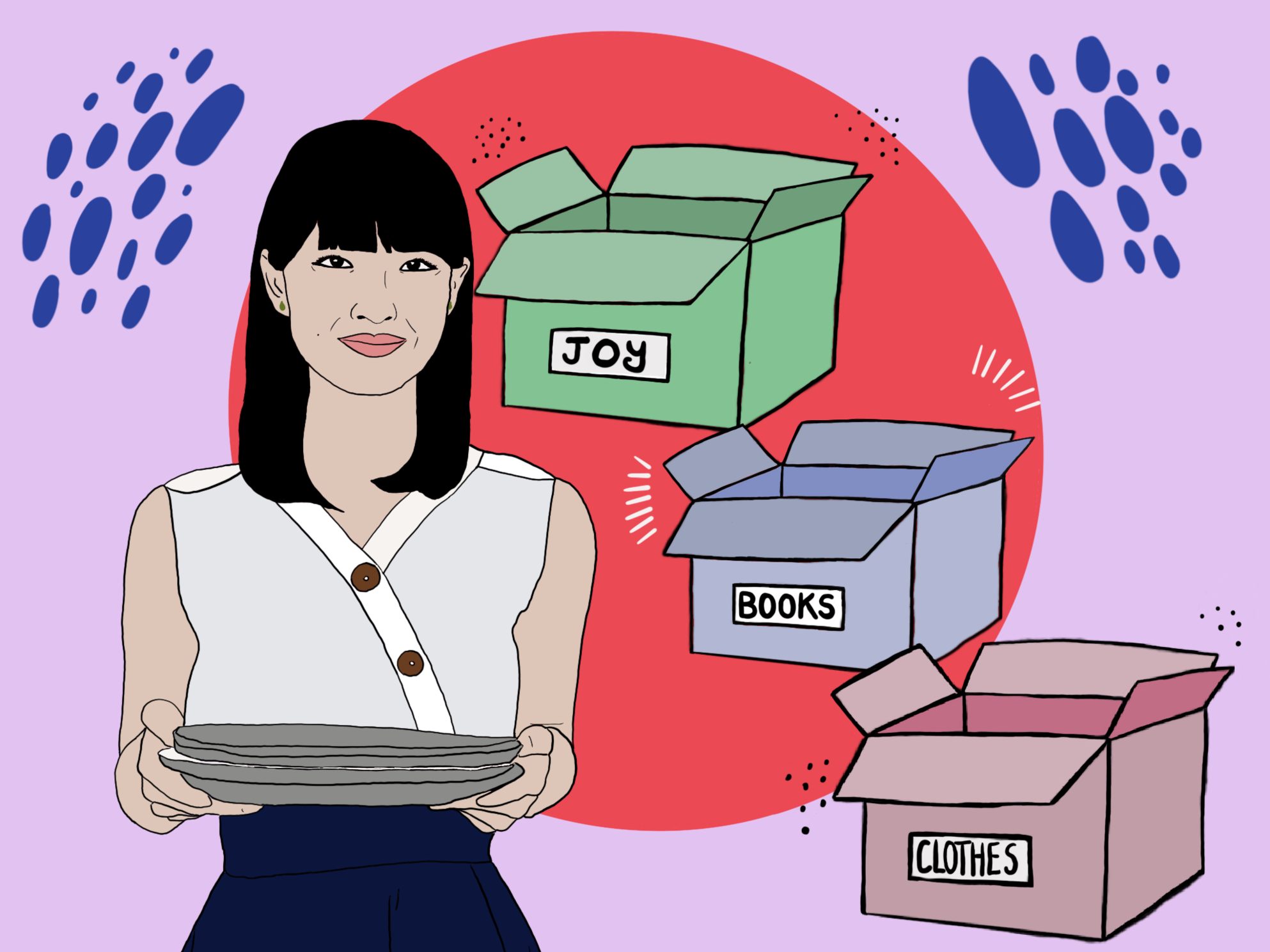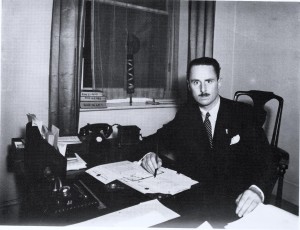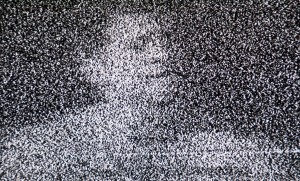
Did We Get Marie Kondo Wrong?
by Cesca Peacock | May 19, 2019
That manky old jumper doesn’t spark joy anymore? Bin it. What about those trousers you never wore? Chuck them. Those books you meant to read but never did? That essay that made everyone in the tutorial cry in a moment of collective mourning for your failed intellectual potential? What about your annoying tutor himself? Definitely doesn’t spark joy…. Chuck him?
Whilst not perhaps explicitly advocating tutorcide, the new Netflix phenomenon Tidying Up with Marie Kondo does encourage a cut-throat attitude to the disposal of possessions. The show poses the idea that tidying up your house and life according to the ‘KonMari’ method will make you happier and more fulfilled. This is quite a bold claim, yet the process is rather exhaustive. Kondo advocates dividing the contents of your house into five categories – clothing, books, paper and ‘komono’ or miscellaneous – so that you ‘tidy by category not location’. The method then asks you to gather all the things of that category in one place before considering which items ‘spark joy’ and those that are destined for another life. It is hard to deny that maybe if you tidy your things up, you might feel happier and less stressed. But to the casual Western viewer, the premise seems, though innocuous, slightly over-idealistic.
Yet, the show has caused uproar on social media over some casualties of the KonMari method. When Kondo suggested throwing away old books that no longer “spark joy”, the rabid-book-fetishizing-Internet (I’m looking at you English students) responded as if their first-born child had been killed. The Internet took Kondo’s suggestion as a tirade against culture, the value of written words, and the sanctity of fiction—far from a simple statement about how best to make use of space. And humanities students claim they aren’t oversensitive.
In all of this, however, there is the underlying sense that Western audiences have received a tradition they can only partly understand. Kondo herself seems to place such great faith in the power of tidying up and its ability to alter lives, just as many of the families she works with do after spending time with her. The respect for possessions Kondo demonstrates, wrote Margaret Dilloway in the HuffPost, is not a part of a late-Capitalist material obsession, but an echo of the Japanese Shinto religion. Whilst it is easy, on a purely secular or practical level, to mock the idea of “thanking” your possessions,it is clear that, for Kondo, such a practice has religious and spiritual roots. Kondo’s tidying method places emphasis on both the importance of material goods and the happiness that can be achieved without them. Yet, uniting both of these sentiments is a sense of the innate dignity of an object, something that is not easily understood by Western audiences for whom material goods are the easily-come-by products of cheap mass-production. Before it is thrown away, an object has to be held with both hands and ‘thanked’ for its service. Kondo’s ‘tidying up’ is more than just hoovering your floor and taking out the empty wine bottles from your room before your parents come over: it’s a cultural practice and attitude to objects that seems alien in our fast-paced, mass-produced world.
The misunderstandings surrounding the KonMari method are part of a wider hostility towards Kondo. In the month and a half since the show’s debut, she has been subjected to a barrage of racism and sexism. Twitter is abound with people comparing her to an automated robot, revelling in how “tiny” and “fairy-like” she is, and being condescending about her “Japanese politeness.” In comparison to this unpleasant side of the Internet, the mocking of Kondo’s tidying up method seems gentle. As a Japanese consultant with an American Netflix show, Kondo is stuck in the middle of a friction-filled moment of “cross-cultural self-help” and the Internet is responding with typical hostility.
At the heart of the KonMari method is a revolutionary attitude to possessions and the worth of material goods; they are valued for their use and capacity to cause happiness, not just their monetary value or social status. This is at odds with our contemporary society which rests upon our consumption of cheap goods and clothing that we may well throw away after 24 hours of use, and that will probably long outlive us on some floating “rubbish island.” Contemporary, capitalist societies thrive on a sense of perpetual dissatisfaction with what you already have; advertising is predicated on a latent, permeating desire for something more, something else, something different. We see ourselves as defined by our possessions, and are continually buying new things in an attempt to reinvent ourselves. It is no coincidence that hoarding has developed as a distinctly 21st century problem; our love of possessions is reaching the point where it is damaging us and, more irrevocably, our planet.
Even while recognising the new perspectives and criticisms that the KonMari method offers, it is hard to deny that perhaps it is not the cure-all the Netflix show makes it out to be. In some of the episodes, Kondo enters houses and families that are really struggling. Impending family breakdown, marital discord—all manner of difficulties are blamed on a messy, possession-stuffed house. In such cases, it’s hard to see how a sink full of washing up has brought the family to such an impasse, and how some neatly stacked boxes will repair all ills resulting from a more general sense of social anomie. In the first episode, the divisions between the newly married couple are probably exacerbated by their cluttered house, yet a more fruitful exercise would be to examine why they find their inability to do household chores so emotive. It is not just that they have married someone who loathes washing up, but that they have each married someone different to whom they expected. Even if a messy home is a reflection of a messy relationship, to go about fixing the home environment is, quite literally, papering over the cracks: the root issues need to be resolved.
The broad idea that a messier house means less time to spend with family holds water, yet suggesting that simply tidying up will solve everything feels too reductive and earnest. Simply filling the mounds of paper in my room and emptying my recycling isn’t going to make my eternally terrifying and vaguely vampiric nightmares about Boris Johnson go away (I wish), but it would, I hope, improve my relationship with my lovely scout.
Perhaps what is most interesting about this new Netflix sensation is exactly that: it is an online sensation. Netflix has managed to make a relatively simple thesis about self-help on the powers of a tidier life oddly compelling to watch, but has done so while monetising the spiritual idea of valuing possessions for their worth and dignity. A programme and philosophy about holding onto things and treasuring them has become something rapidly consumable and binge-worthy; something to forget about as soon as you finish the series, not, I suppose, to agonise over and write articles about.
What we perhaps need to recognise is that ‘Kondo-ing’ your home by hiring out consulting services at $80/hr is a form of consumption. What Kondo has come to represent has, uncomfortably, become a product to be consumed and presumably, in a couple of months, forgotten about and left to languish in some recesses of a cupboard. Yet, maybe all this amounts to is the fact that I’ve watched far too much Marie Kondo when I should have been writing an essay and, instead of analysing Ulysses, I’ve analysed Netflix instead. Oh, well, if this article doesn’t spark joy, maybe just thank it (or me), bin us, and move on.∎
Words by Cesca Peacock. Illustration by Emily Reed.




